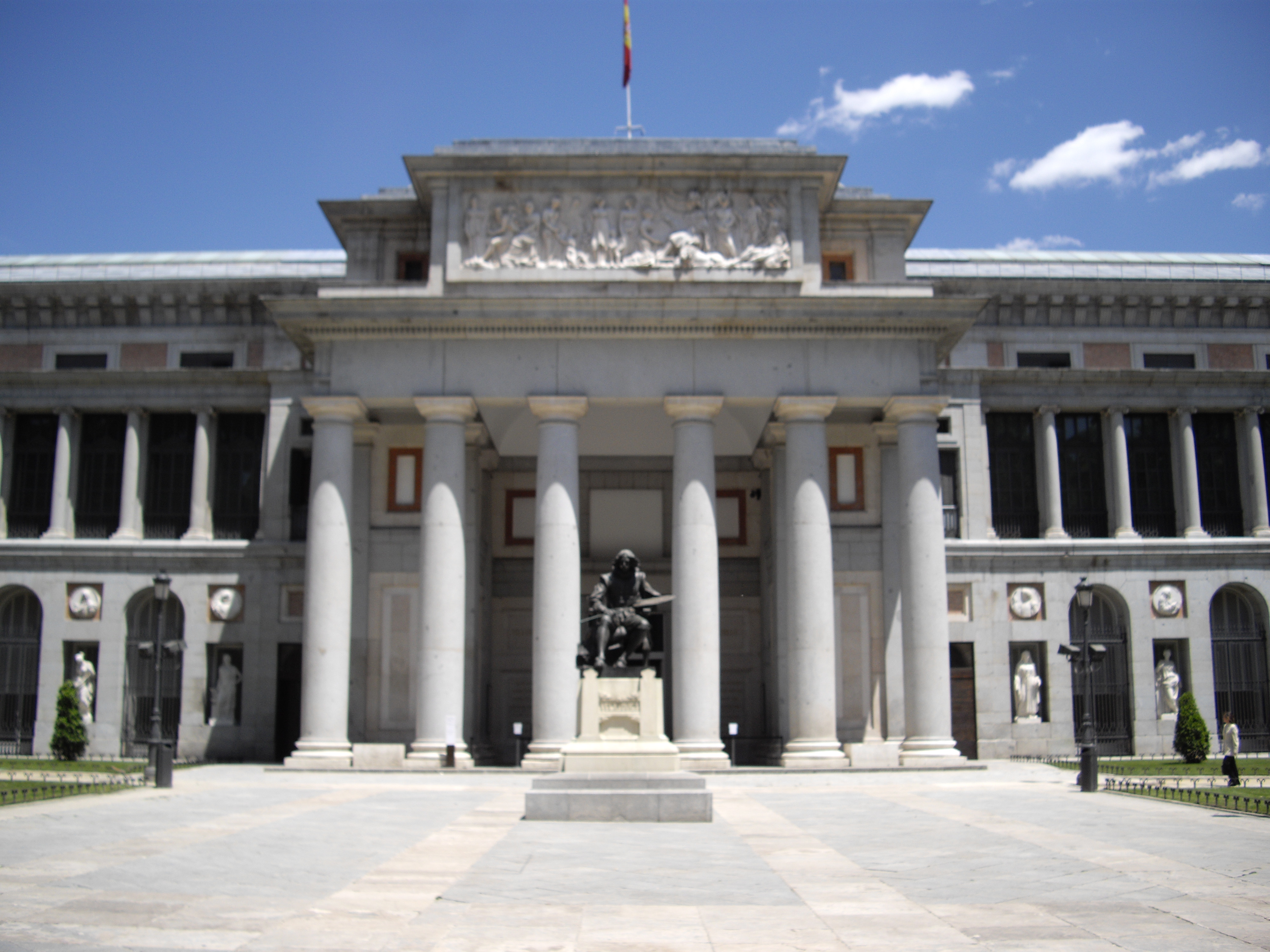The Cave of Altamira is a cave in Spain famous for its Upper Paleolithic cave paintings featuring drawings and polychrome rock paintings of wild mammals and human hands. It was the first cave in which prehistoric cave paintings were discovered. When the discovery was first made public in 1880, it led to a bitter public controversy between experts which continued into the early 20th century, since many did not believe prehistoric man had the intellectual capacity to produce any kind of artistic expression. The acknowledgment of the authenticity of the paintings, which finally came in 1902, changed the perception of prehistoric human beings

Basilica–Cathedral of Our Lady of the Pillar
The Basilica–Cathedral of Our Lady of the Pillar (Spanish: Catedral-Basílica de Nuestra Señora del Pilar) is a Roman Catholic church in the city of Zaragoza, Aragon, Spain. The Basilica venerates Blessed Virgin Mary, under her title Our Lady of the Pillar[1] praised as Mother of the Hispanic Peoples by Pope John Paul II.It is reputed to be the first church dedicated to Mary in history.[3]
Local traditions take the history of this basilica to the dawn of Christianity in Spain attributing to an apparition to Saint James the Great, the apostle who is believed by tradition to have brought Christianity to the country.This is the only reported apparition of Mary to have occurred before her believed Assumption.
Museo del Prado
The Museo del Prado is the main Spanish national art museum, located in central Madrid.
It features one of the world's finest collections of European art,
dating from the 12th century to the early 19th century, based on the
former Spanish Royal Collection, and unquestionably the best single
collection of Spanish art. Founded as a museum of paintings and sculpture
in 1819, it also contains important collections of other types of
works. El Prado is one of the most visited sites in the world, and is
considered one the greatest museums of art in the world. The numerous
works by Francisco de Goya, the single most extensively represented artist, as well as by Diego Velázquez, El Greco, Titian, Peter Paul Rubens and Hieronymus Bosch are some of the highlights of the collection.

Mudéjar
Mudéjar (Spanish: [muˈðexar, muˈðehar], Portuguese: [muˈðɛʒaɾ], Catalan: Mudèjar [muˈðɛʒər], Arabic: مدجن trans. Mudajjan, "tamed[1] ") is the name given to individual Moors or Muslims of Al-Andalus who remained in Iberia after the Christian Reconquista but were not converted to Christianity, unlike Moriscos who had converted. After centuries of intermarriage they were, in ethnic terms, for the most part largely indistinguishable from the wider Spanish population.[2]Mudéjar also denotes a style of Iberian architecture and decoration, particularly of Aragon and Castile, of the 12th to 16th centuries, strongly influenced by Moorish taste and workmanship.

The Basílica i Temple Expiatori de la Sagrada Família
The Basílica i Temple Expiatori de la Sagrada Família (Catalan pronunciation: [səˈɣɾaðə fəˈmiɫiə]; English: Basilica and Expiatory Church of the Holy Family), is a large Roman Catholic church in Barcelona, Catalonia (Spain), designed by Catalan architect Antoni Gaudí (1852–1926). Although incomplete, the church is a UNESCO World Heritage Site and in November 2010 Pope Benedict XVI consecrated and proclaimed it a minor basilica as distinct from a cathedral which must be the seat of a bishop. Construction of Sagrada Família had commenced in 1882 and Gaudí became involved in 1883 taking over the project and transforming it with his architectural and engineering style, combining Gothic and curvilinear Art Nouveau forms.

No comments:
Post a Comment